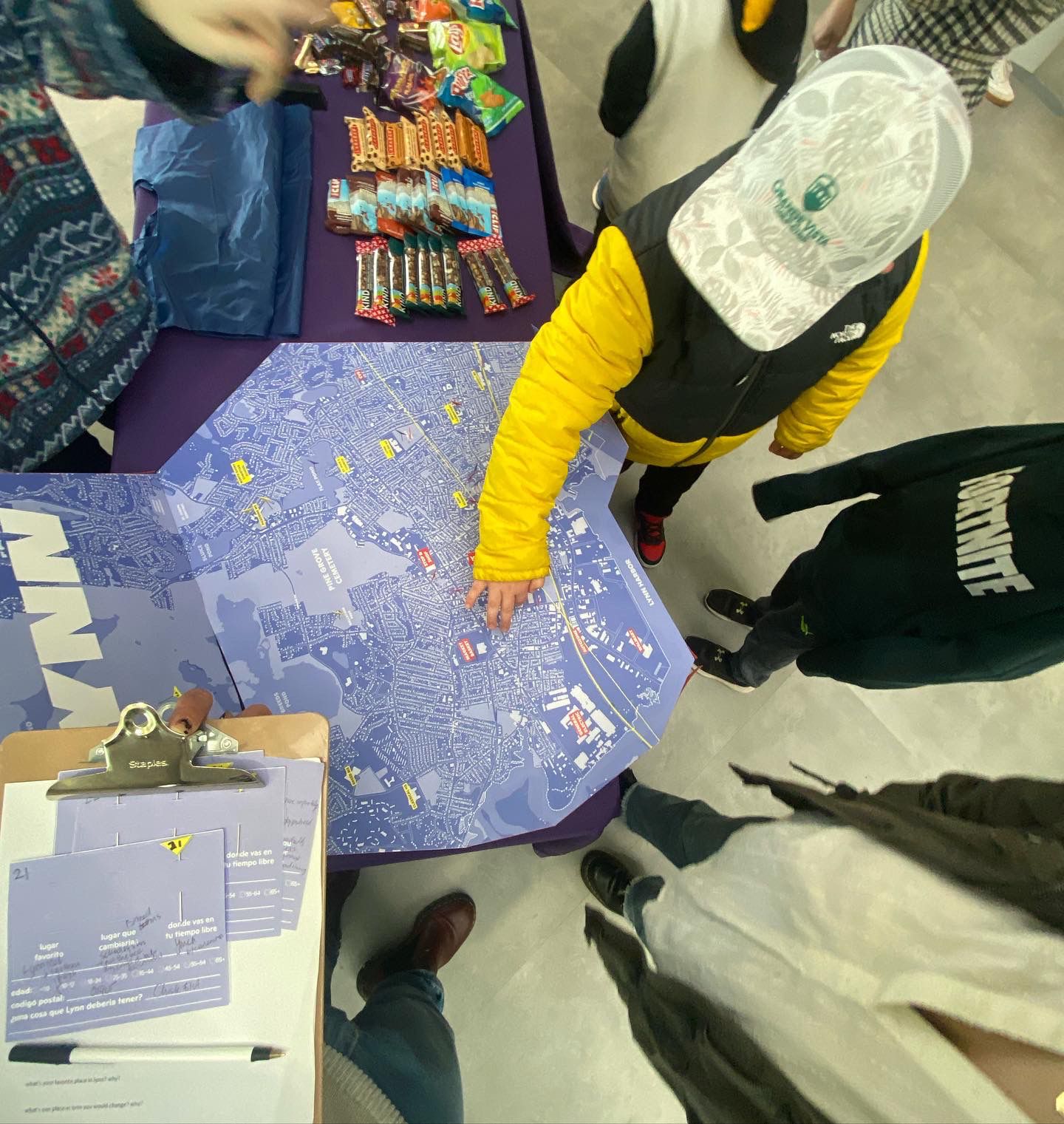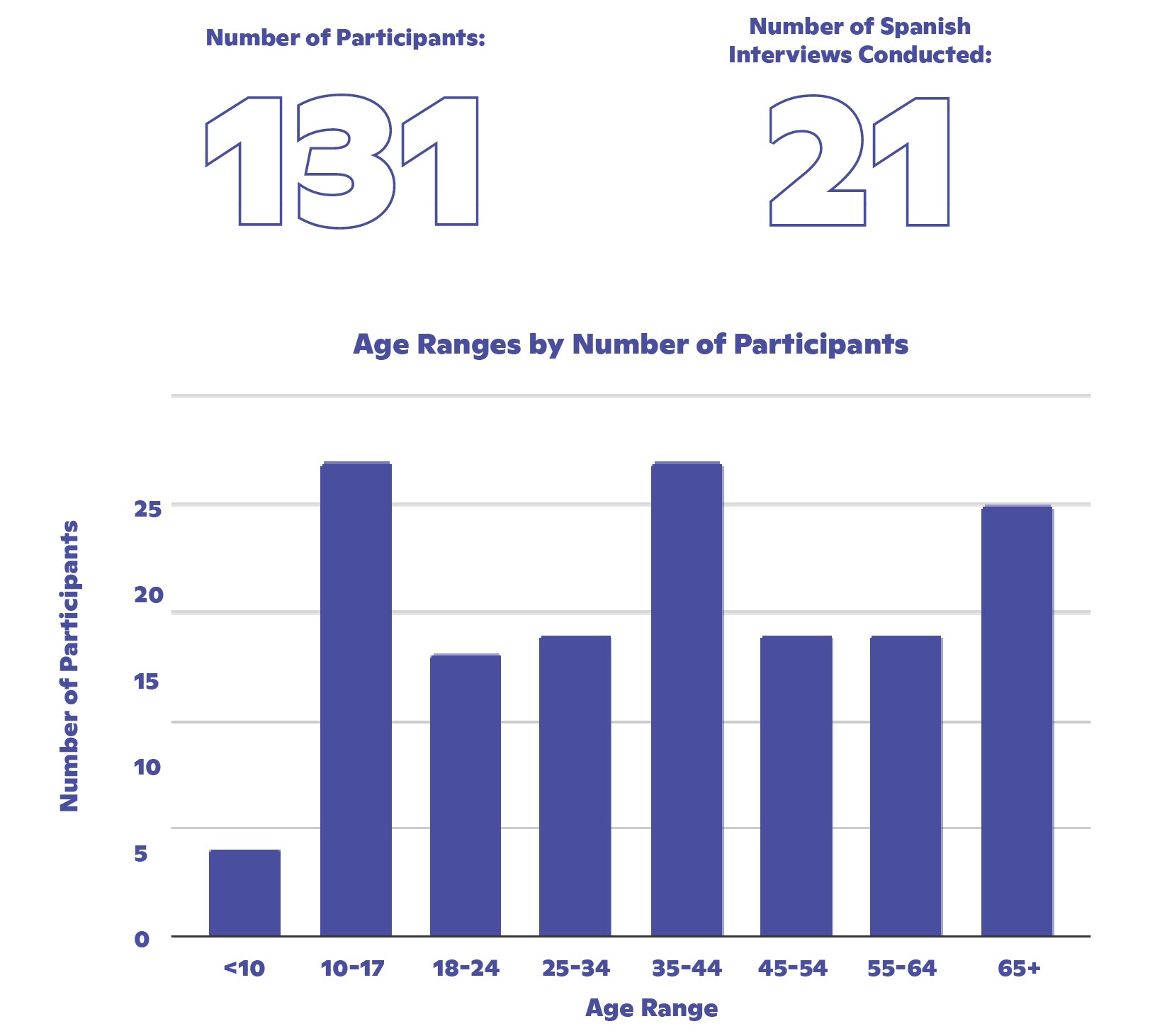1. Lynntercept
Harvard GSD
Urban Planning Core 2 Studio, Fall 2022
Critics: Brie Hensold, Dan D’Oca
Engagement Partners: Mike Kaneshiro, Arshaya Sood, Briana Villaverde, Maggie Weese
**Graphic design and fabrication work completed independently
Lynntercept was an engagement effort that used intercept surveying methods to gather input on a wide variety of topics from a highly diverse array of individuals across Lynn, Massachusetts. As a team of five students, we strategized and implemented four engagement events with the express objective of hearing from those who have historically been excluded or left out of participatory planning processes, including immigrants and non-English speakers, families with children, youth, the elderly, and the unhoused. We picked our intercept locations--Stop & Compare Market, Lynn Public Library, the YMCA, and Lynn City Hall--based on the communities that typically frequent each space, distributing our visits over weekdays and weekends to widen our reach.

Our methodology for engagement consisted of three primary strategies:
1. Be Brief: Limit interactions to 2-3 minutes using a set of 4 straightforward questions to ensure that more people can participate while allowing those who would like to engage more deeply to linger near the table.
 2. Be Visual: Use eye-catching and accessible visual elements (including a large-scale interactive map) to attract people to the table, ensure that the purpose of the survey is clear, and elicit pride in Lynn as a city.
2. Be Visual: Use eye-catching and accessible visual elements (including a large-scale interactive map) to attract people to the table, ensure that the purpose of the survey is clear, and elicit pride in Lynn as a city. 3. Compensate: Offer prizes (snacks, reusable bags, gift cards, etc.) to every participant through the use of a winners-only spinner wheel.
3. Compensate: Offer prizes (snacks, reusable bags, gift cards, etc.) to every participant through the use of a winners-only spinner wheel.


Results: Over the course of four engagements, we spoke to 131 people, conducting over 20 of our interviews in Spanish and reaching an expansive variety of locals. Our participants included people who self-identified as refugees, foster youth, bus drivers, jazz musicians, retired firefighters, immigrants, developers, lifelong Lynners, recovering users, new mothers, and unhoused folks. Our conversations uncovered a wide range of insights about Lynn, including the need for more maintenance of its parks and open spaces, the rising cost of housing, and the overcrowding of its public schools. We also learned a lot about the city's singular assets, including Lynn Woods, its vibrant restaurant scene, and its waterfront.




One Pager: At both the mid-point and the end of the engagement project, I designed single-page printable documents to succinctly and accessibly communicate Lynntercept’s qualitative research findings to student teams working on planning projects in a variety of topic areas, ranging from natural systems to housing.
